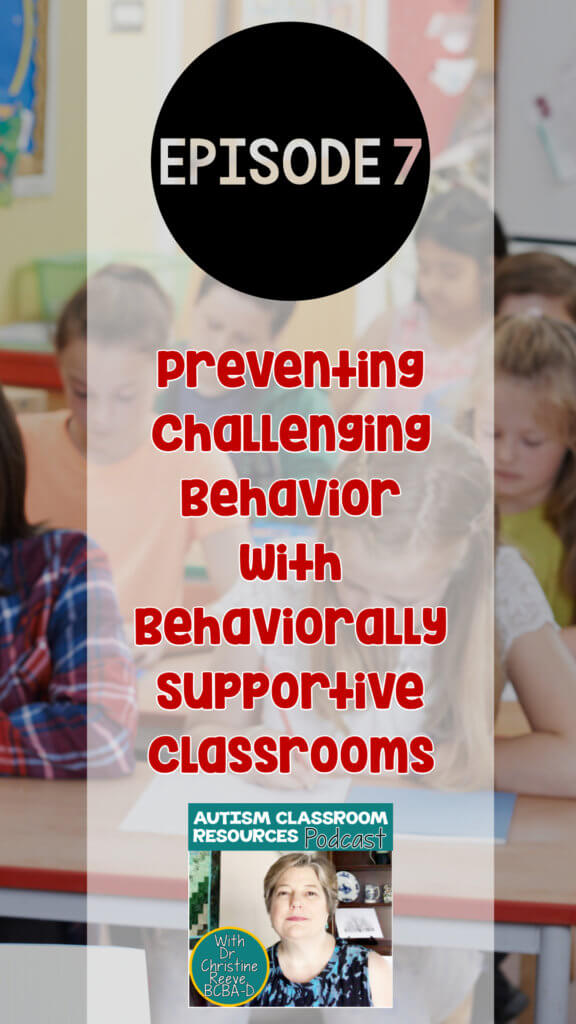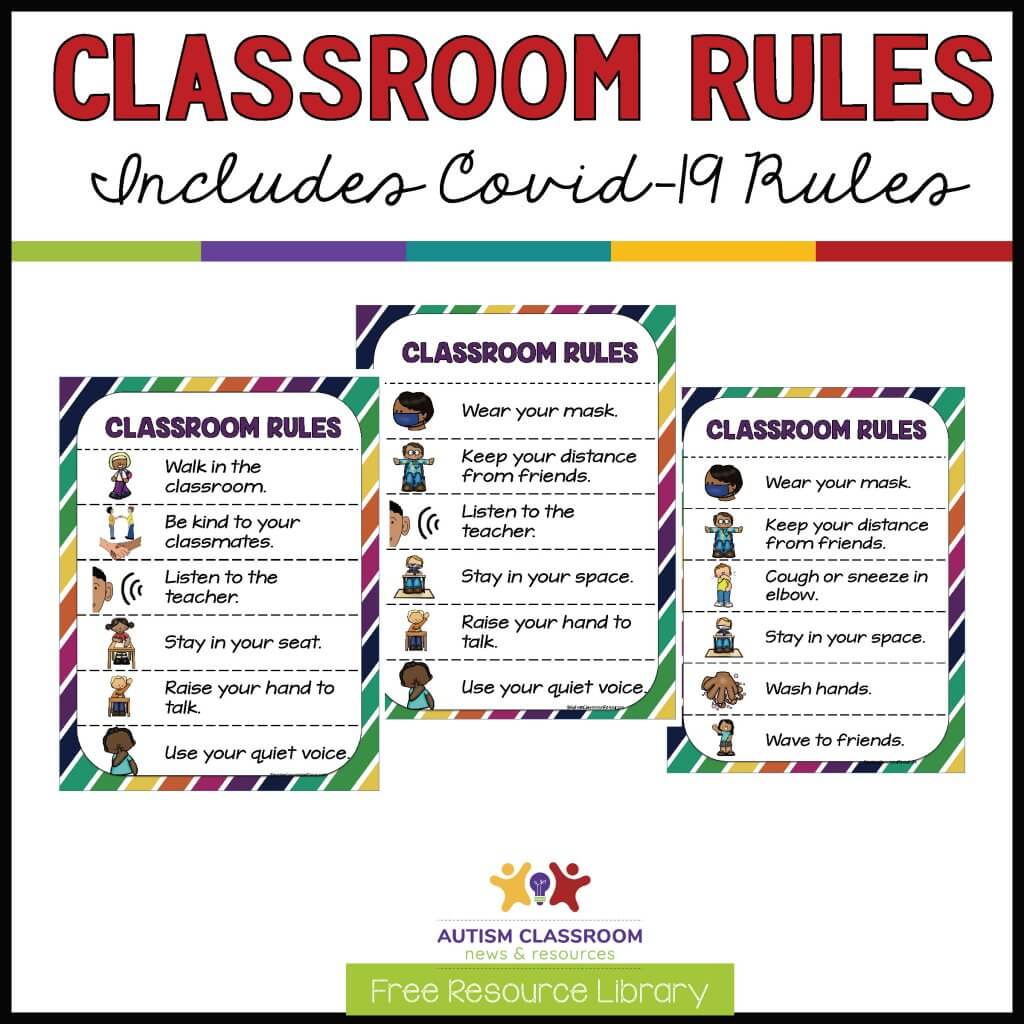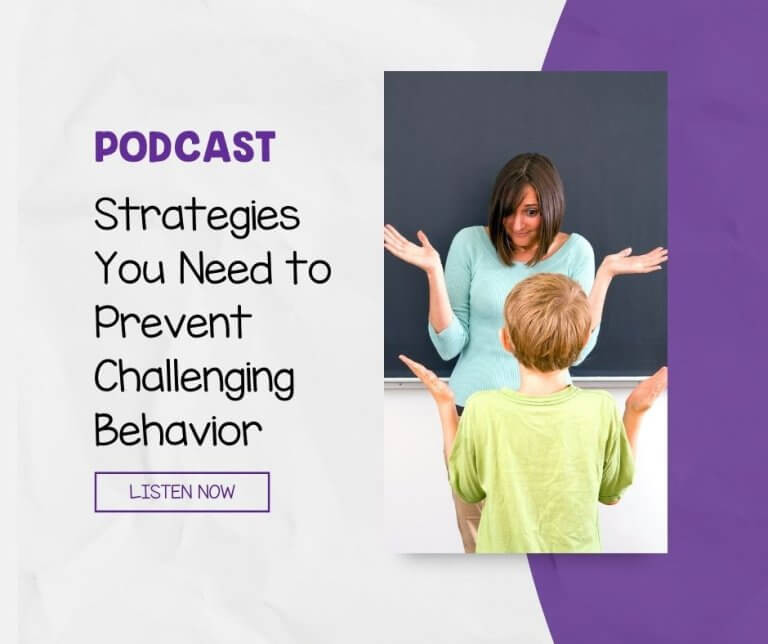Sharing is caring!


In this episode I talk about how we can prevent behaviors problems from happening in the first place. In episode 6, I talked about the foundations of how challenging behavior develops and maintains. I also focused in on the importance of looking at the function of behavior to determine how to treat it.
But one of the wonderful things about this approach to behavior is that you can put strategies in place to prevent challenging behavior. When you focus on the form of behavior, you have to wait til it happens to respond to it to change it. But when you focus on the function of the behavior, then you can do tons of things to prevent the behavior from happening. And your teaching can be more effective because you can teach replacement skills when the student is not in crisis.
And there is a free set of visual rules at the end of this post!
We all like structure and routine. There is a reason that TV networks don’t change their TV schedule and show the same show at different times and days each week. Click to Tweetset up the classroom to prevent behavior problems first
I talked in the last episode briefly about the need to assess challenging behavior to determine the function. But before we start that process, we can always put classroom strategies in place to prevent behaviors from happening at all. So for today, let’s focus on how we set up a behaviorally supportive classroom that prevents challenging behaviors from happening.
There are 6 fundamental strategies you should have in place in every classroom to support appropriate behavior. For many students these strategies can prevent challenging behavior from happening or prevent it from escalating to the point where you need a full functional assessment and individual behavior plan. As I note in the episode, if I walk into a classroom of 10 students and the teacher says 9 of them need FBAs, then we might want to look at the classroom first to see if there are changes we can make across the board.
Once you have these strategies in place, then you’ll see who in the classroom needs more intensive assessment and intervention. This way if all your students are struggling with behavior, these strategies may take care of some of them making it more feasible to do good functional assessments on the remaining issues. We’ll talk about that process in future episodes.
IN THIS EPISODE…
- 6 fundamental structural strategies every classroom should have to prevent behavior problems
- Strategies for making sure that you get the most out of the strategies and tools you have in place like reinforcement and expectations
- Methods to think about for differentiating behavioral instruction
- The importance of reinforcement based on research
- Reasons and strategies for keeping students engaged as a behavioral prevention tool
- Examples of how all of this applies to all different types of students you serve in special education from students with severe disabilities to students who have emotional and behavioral disabilities.
sign up for free tips each week in your inbox and Grab a free set of classroom rules from the resource library

This free set of rules includes covid precautions as well as standard rules.
Grab them from the Free Resource Library. Click below to navigate or join the free library.





